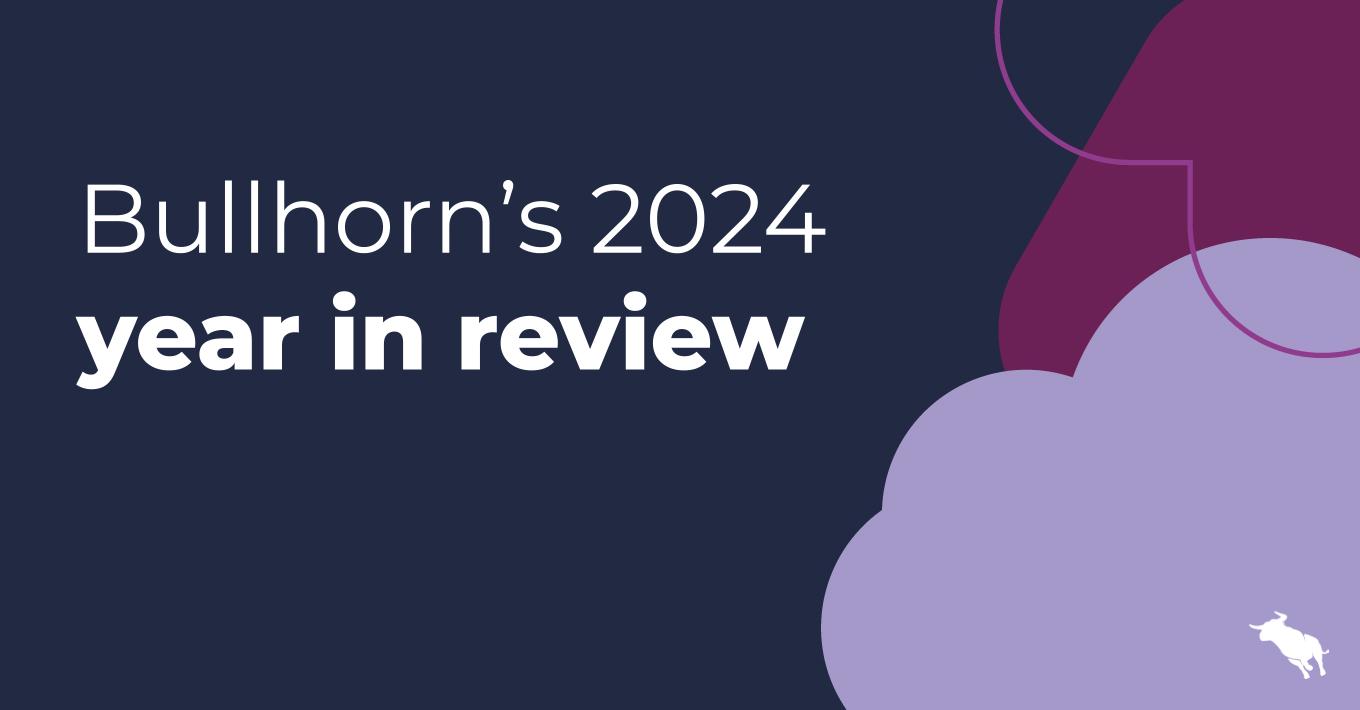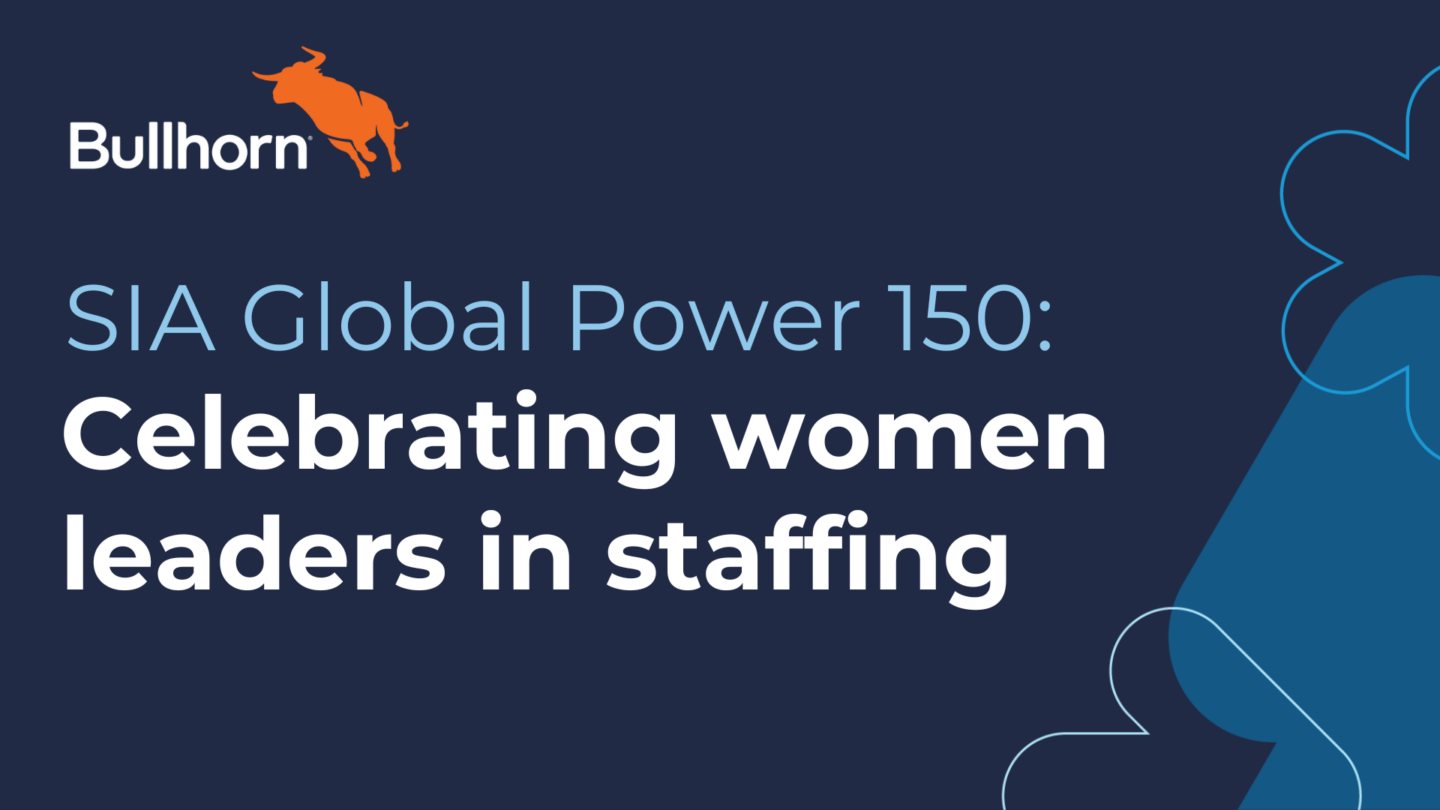AI: More than a Staffing Buzzword
The evidence is overwhelming: staffing and recruiting professionals are overwhelmingly enthusiastic about artificial intelligence (AI). As part of Bullhorn’s survey of 2,000 global industry professionals, we asked respondents to name the trend they’re most interested in following over the next three to five years. AI was the top response and it wasn’t close. In particular, respondents are especially excited about the implications of AI for candidate screening and sourcing. This likely won’t be much of a surprise to anyone who has spent even a day in the industry over the last several years—the unemployment rate is historically low, the talent shortage is historically high, and candidate acquisition is the top priority for firms year after year.
The interest in AI goes beyond sourcing, however. Eighty percent of respondents said embracing the digital transformation of the industry through AI and automation would help their business, compared to just five percent who said it would hurt their business, and fifty-percent say AI will have a positive impact on candidate and customer engagement compared to just 18 percent who disagree.
“I’m excited for Artificial Intelligence and how it can improve the industry as a whole” — Respondent, Global Recruitment Insights and Data Report.
The industry understanding of AI is fuzzy at best
This enthusiasm for AI belies an important truth: few in the industry feel that they have a strong understanding of AI or how it will actually help staffing firms.
When asked to evaluate their understanding of AI, respondents gave themselves a five out of ten on average. Thirty-six percent say they have a high understanding of the subject—but this number pales in comparison to the number of industry professionals talking about AI.
What’s the cause for the disconnect? Staffing professionals hear about AI year after year in the abstract, but few see tangible illustrations of what that means for their business.
“Artificial intelligence could be huge once it gets figured out—which I’m still not convinced is the case.” — Respondent, Global Recruitment Insights and Data Report.
To close that gap, here are some exciting developments that prove that AI is so much more than an empty buzzword.
AI in recruitment is already here
The truth is that AI is already having an outsize impact on the industry. Today, AI and automation are already influencing business processes and functions. Staffing professionals are using this technology to automatically process otherwise very manual tasks, like VMS order updates, time capture, and document management and to avoid costly errors.
They’re also using AI to predictively match candidates to open jobs, fast-tracking those candidates most likely to be successful. As a result, they’re building lasting and trusting relationships with both candidates and clients.
Data is the fuel that makes AI run. At Bullhorn, for example, we have literally billions of records about candidates, jobs, resumes and placements, and we know who has been placed at previous jobs successfully. We can determine if jobs are similar, if candidates are similar, and we can use all of this combined information to improve the accuracy of placements made by serving up matching recommendations.
If one candidate was successful in one job, that historical data can be used to find a candidate match for a similar job. By placing candidates more likely to succeed, customers both earn trust and deliver great experiences to both candidates and client alike. In the end, it’s all about candidate and client experiences.
What are the practical staffing applications for AI?
The applications of AI have the power to change the industry for the better and, in many cases, they’re already here or right on the horizon.. Here’s a taste of what leading staffing technology companies are Here’s a taste of some of the most impactful applications for AI to look out for.
Repair redeployment
If you’re trying to find inefficiencies in your business, redeployment is a good place to start. A quarter of staffing firms place less than 10 percent of workers on another assignment, and half redeploy fewer than 25 percent. Even if you have an above-average redeployment rate, there’s a huge opportunity to boost revenue, efficiency, and profitability.
The struggle to improve redeployment is a multifaceted challenge complicated by the skills shortage–firms often can’t redeploy an otherwise incredible candidate because the worker doesn’t have the qualifications for an open role—and AI alone won’t solve it. But firms can use existing technologies like chatbots, but powered by AI, to completely reimagine the way they handle reassignments.
From interviewing Bullhorn customers and other staffing professionals, we discovered that low redeployment correlates with the staffing firm not knowing when an assignment ends. Even if the recruiter knows the original end date, these timelines often change. Checking in with candidates for end dates consistently takes time and effort that most recruiters don’t have available. To make timely hiring decisions, recruiters need updated information on specific data points such as certifications, licenses, new skills and pay rate in addition to availability. Every client, location and even job order is unique so a one-size-fits-all form will simply not work.
The solution? Chatbots that automatically engage with candidates and hiring managers through texting to determine end dates and other relevant data. Armed with the accurate data from the chatbot, the recruiter can follow up with the candidate. Here’s an example of an early mockup of that process:
Eliminate manual work through automated invoice parsing
One of the great promises of AI and automation is the elimination of manual work so that staffing professionals can do what they do best: build relationships and focus on the people at the heart of the industry.
With that in mind, our team built a fully-customizable AI engine to automate invoice parsing and document ingestion. The user defines which fields she wants to extract, then marks those fields in sample documents to generate training data for the system engine. The engine then learns to automatically extract fields as specified by the user. If the system makes a mistake, the user can provide instant feedback. The more training data we get, the more rapidly and consistently the system accuracy improves.
Currently, a lot of training data is required to reach an appropriate accuracy. Up to 10,000 training documents are required to reach 95 percent accuracy. While these projects highlight the high degree of difficulty in applying AI to the staffing industry, they also demonstrate the tantalizing opportunities for firms to be more efficient, productive, and profitable.
Changing the staffing industry for the better
Much has been written about the potential for artificial intelligence to exacerbate and amplify existing biases in the world of work, but with intent, staffing professionals can use AI to promote diversity and inclusion both internally and for their clients. Staffing firms can use AI to eliminate—or at least counter—explicit and implicit biases.
It’s well-documented that employers often subconsciously penalize candidates based on gender, race, or background; studies have found that changing a name on a resume can return wildly differing results. AI can counter those biases by quantifying the matched elements for a position—relevant certifications, experience, education—into a summarized score, usually computed by valuing the sub-elements consistently using role and industry-specific weights. Even if there weren’t biases at play, this would provide value in the hiring process.
The future is now
Make no mistake: AI and AI-influenced technology is already having a profound impact on the staffing industry, and will only continue to do so in the years ahead. Firms that leverage the power of AI and automation to power their business will be in an incredible position to reap those rewards now and in the future.
Interested in learning more about the challenges, opportunities, and ideas that shape the staffing industry? On the Global Recruitment Insights and Data (GRID) site, you’ll find year-round research on top trends shaping the industry.
